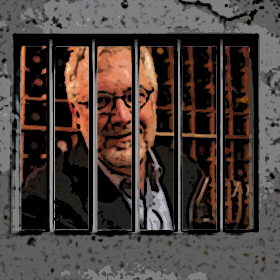Intro To The Obligatory Chapter On Wine Tasting Techniques.
Chapter Three, Part One.
 I know what you’re thinking. I said this wasn’t going to be like every other wine blog on the internet and I’m already writing about how to taste wine. Every magazine and book ever written about wine has a chapter about ‘Tasting Techniques’. I know it. You know it. Even your preschooler knows it because she read about it on her i-phone.
I know what you’re thinking. I said this wasn’t going to be like every other wine blog on the internet and I’m already writing about how to taste wine. Every magazine and book ever written about wine has a chapter about ‘Tasting Techniques’. I know it. You know it. Even your preschooler knows it because she read about it on her i-phone.
Before you skip to the next chapter or surf off in search of cute kitty videos you should know the ‘Tasting Techniques’ chapter is a pillar of wine journalism, an institution steeped in class and tradition, much like NASCAR and hOOters.
Tasting wine and translating your impressions into words can be a daunting task. You may think, “Hey, I’ve spent hours reading shelf talkers in my favorite wine store. How hard can it be?” Well let’s give it a try. Attempt to describe the taste of coffee to someone who has never tasted it. What would you say? Aromas aren’t any easier to describe. Can you describe the aroma of a peach to someone who has never smelled one?
Some foods are easier to describe because they are named after a combination of familiar aromas or flavors. Have you ever noticed how pineapple has aromas reminiscent of both pine and apple? How about coconuts? Pay attention and you will notice scents of both cocoa and nuts. It’s an ingenious device and explains how the shiitake mushroom got its name.
If the best you can come up with is coffee tastes like… well, coffee, and peaches smell like peaches, you might ask, “Why don’t wine reviewers simply write that Syrah tastes like Syrah and Riesling smells like Riesling.” Would you buy The Wine Spectator if the reviews of the latest releases of German Rieslings looked like this?
This wine smells and tastes like Riesling. 94 SCHÄFER-FRÖHLICH Riesling Spätlese Nahe Bockenauer Felseneck This wine smells and tastes like Riesling. 93 REICHSGRAF VON KESSELSTATT Riesling Spätlese Mosel Scharzhofberger This wine smells and tastes like Riesling.
If this is how The Wine Spectator wrote about wine I would cancel my subscription, right after the February swimsuit issue.
In an earlier blog I wrote about wines unique ability to mimic familiar aromas and flavors, so although Riesling does smell and taste like Riesling, those characteristics may remind you of tangerines, wet stones, or the back seat of your old Chevy.
Cajoling these characteristics out of a glass of wine sometimes takes a little work which is why wine writers always include a tasting techniques chapter. Oh, and because it’s the law. Statute 253, Section IV, Paragraph 45 clearly states all books written on the subject of wine appreciation must include a chapter on ‘Tasting Techniques.’ I’m including it because I’m happier sitting at bars than behind them.





















Congrats: I’m tempted to believe that someone is finally going to take on the wine establishment and write about how you can learn to sound like the effete wine snobs I’ve despised for so long.
I love wine, and my tastes have changed. For instance, in the hot days of July and August, I love a botle of Riesling or Gewurztraminer. What’s more, many German Rieslings are only 8 or 9 percent alcohol–sort of like lite beer. The taste is still there but you can consume a whole bottle and not need a call to 911.
Okay, I’m not oing to blab here, but I’ll certainly read your articles. And thank you very much, from us silent millions of wine drinkers who would like to be more “cool.”
As your next project plese find someone who can decode the Electrician’s Satyricon of light bulb codes. If it were in English, more of us wouldd convert to LED bulbs in a heartbeat.
A. Vlamis
Thanks for the feedback Anthony. I’ll keep taking on the wine establishment but when it comes to light bulbs I’m pretty dim.